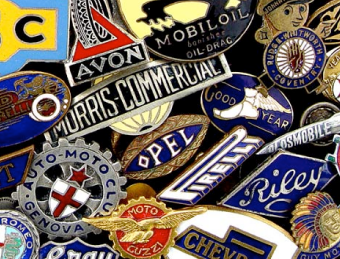How to Iron On Patches - A Step-by-Step Guide

Iron-on patches have always been a beloved method for personalising clothing and accessories and are a great outlet for self-expression. With many people returning to a “make do and mend” philosophy and choosing to repair their clothes rather than replace them, custom iron-on patches are perfect for those with limited sewing skills.
Whether you’re upcycling a denim jacket, customising a hat, or applying an embroidered patch to your favourite bag, you’ll need to know how to iron on a patch so it stays put and doesn’t fall off. In this guide, we’ll delve into the science of applying patches to clothing and accessories and give you some tips and tricks to achieve perfect results every time.
What is the Best Fabric for Iron On Patches?
Generally, cotton is considered the best fabric for iron-on patches, with denim and canvas being some of the most popular choices. Polyester is also a good option but it can’t take as much heat as cotton. Lightweight cotton fabric may not provide enough stability for an iron-on patch so opt for a medium to heavyweight fabric.
You can use ironable patches on fleece fabric but you will need to use a lower heat setting. Use the recommended ironing setting on the care labels inside garments for guidance or set the iron to the specific fabric setting if this is an option. Fabrics like leather, nylon and other types of synthetic fabric should be avoided for iron-on patches, however, they may be more suitable for sew-on patches.
How To Iron On a Patch - Step-by-step instructions
Here’s what you’ll need:
-
Your custom iron-on patch
-
An iron
-
An ironing board
-
Parchment paper or either a pillowcase or a thin tea towel to act as a barrier between the iron and the patch and fabric.
-
Your clean garment or accessory to apply the patch to
Step 1 - Prep Your Custom Iron Patch And Garment Or Accessory
The first step is to get your item ready for the custom patch. Make sure it is clean, dry and wrinkle-free so the patch will adhere securely. Also, make sure the adhesive side of the embroidered patch is free from hairs or debris.
Step 2 - Find The Correct Heat Settings
If you plan to iron a patch onto a garment, first make sure the fabric is suitable, then set your iron to the heat settings on the care label. If your iron has a range of fabric settings, set it to the specified one. If your item has no care labels and you’re unsure what to set your iron to, place it on a low setting to be on the safe side. You may need to increase the time you apply the heat when the settings are lower.
Step 3 - Get the Area Ready for the Embroidered Patch
When the iron is heated and ready, iron the area of the garment or accessory in preparation for the patch. This will not only create a smooth surface but will heat the fabric and give the adhesive on your iron-on patch the best chance of bonding to the fabric.
Step 4 - Place Your Patch, Cover it With Parchment Paper and Iron
When you’re happy with the placement of your patch on your garment or accessory, cover it with parchment paper, a pillow case or a thin tea towel to prevent accidental burning.
Use the tip of the iron to start applying heat to the centre of the patch. This will help to stabilise it and prevent it from moving around as you move the iron. In a circular motion, iron over the parchment paper or cloth for between 60 and 90 seconds.
Bear in mind, the heat needs to sufficiently melt the adhesive backing so it can fuse to the fabric so you may need to alter the time according to your heat settings. Lower heat settings may require longer pressing times. Pay attention to the edges and corners of the patch to ensure the patch has bonded securely.
Step 5 - Let It Cool Then Check The Patch Application
Once cooled, inspect the patch to make sure it has fused with the garment or accessory. Start with the edges and try to lift and pull the patch. If some edges lift, replace the parchment paper or cloth and repeat step 4 until the patch is securely attached.
Step 6 - Iron the Reverse Side of the Patch
If you are satisfied that your iron-on patch is secure, flip your garment or accessory to the reverse side, replace your parchment paper or cloth barrier and press the area again for around 30 seconds and let it cool.
Step 7 - Check the Patch and the Garment or Accessory
When you’ve successfully applied the iron-on patch and it has cooled, check it again to ensure all the edges or corners have fused. If you’ve applied your patch to a shirt or a hat, try it on to make sure your patch stays on during movement.
Shop Custom Embroidered Patches at Badges Plus
Now you know how to iron on embroidered patches, how about creating your own custom patch? At Badges Plus, we can help you create custom iron-on patches with an embroidered design of your choice. If you have something in mind, our talented team of creatives can help bring your idea to life and design the embroidered patch to your specifications. Whether you want to create patches for clothes, bags or hats, our embroidered badges are ideal for repairs, customisation, promoting events and organisations and much more.
If you’d like more information about creating custom iron-on patches, browse our bespoke embroidered badge page or contact our team who will be happy to help.
- December 2024 (1)
- September 2024 (1)
- August 2024 (2)
- July 2024 (2)
- June 2024 (2)
- May 2024 (2)
- April 2024 (2)
- February 2024 (2)
- January 2024 (2)
- November 2023 (1)
- October 2023 (1)
- September 2023 (2)
- August 2023 (1)
- July 2023 (2)
- June 2023 (1)
- May 2023 (1)
- April 2023 (2)
- March 2023 (1)
- February 2023 (1)
- January 2023 (1)
- December 2022 (3)
- November 2022 (2)
- September 2022 (1)
- July 2022 (1)
- June 2022 (1)
- May 2022 (1)
- April 2022 (1)
- March 2022 (1)
- February 2022 (1)
- January 2022 (1)
- October 2021 (2)
- September 2021 (2)
- August 2021 (2)
- July 2021 (2)
- June 2021 (1)
- May 2021 (1)
- April 2021 (2)
- March 2021 (2)
- February 2021 (2)
- January 2021 (1)
- December 2020 (2)
- November 2020 (2)
- October 2020 (4)
- September 2020 (1)
- July 2020 (1)
- May 2020 (1)
- April 2020 (1)
- March 2020 (3)
- February 2020 (2)
- September 2019 (1)
- August 2019 (1)
- May 2019 (1)
- April 2019 (1)
- March 2019 (1)
- January 2019 (1)
- December 2018 (1)
- November 2018 (2)
- October 2018 (1)
- September 2018 (1)
- June 2018 (1)
- May 2018 (3)
- April 2018 (1)
- February 2018 (2)
- January 2018 (1)
- December 2017 (1)
- November 2017 (1)
- October 2017 (3)
- September 2017 (1)
- August 2017 (1)
- July 2017 (2)
- May 2017 (1)
- July 2016 (1)
Enquire Now










